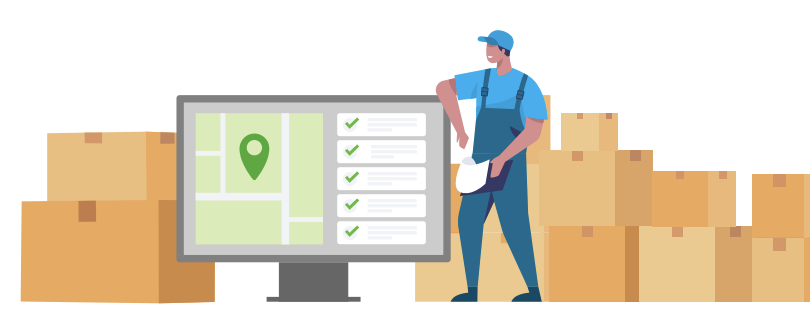By Shippo
It’s almost *that* time of year again! But where many savor the burgeoning chill in the air, the smell of fir trees and peppermint, and the crackling sound of a yule log in the fireplace, those of us in the wonderful world of e-commerce can sometimes have a slightly different reaction to the arrival of the holiday season.
Panic!
That might be a slight exaggeration, but it’s no secret the holiday season is reliably the busiest of them all — which is why we’re here to help you get ahead of the peak holiday season rush.
Of course, we all know these past couple of years have been unlike any we’ve experienced before. The supply chain disruptions and variant-fueled staff shortages of 2021 impacted the usual end-of-year rush earlier and more aggressively than years past, highlighting the urgency and importance of having a strong shipping and fulfillment plan in place.
While we’ve adjusted our 2022 strategies with these hiccups in mind, growing inflation costs and a near-impending recession are creating new challenges that are sure to impact the entire e-commerce industry throughout this upcoming peak. Retailers should prepare to address not only the delays and disruptions experienced in years past, but also shifting consumer needs and expectations that come with tightened belts and a sluggish economy. With all of this in mind, it’s crucial to start prioritizing and planning for peak season now, rather than waiting until you’re in the thick of it later this year. While it may seem like we’ve still got a ways to go, getting started in October simply won’t give you enough time to get all the moving pieces in place.
By ticking all the boxes on this handy peak season shipping guide, you’ll be well-equipped and on your way to not just surviving, but thriving and delighting your customers at every step this holiday season, from goal setting and planning to carrier strategy and the inevitable returns rush.
Step 1: Review Data From Peak Seasons Past
The best way to prep for future success is to look back at where you’ve been. You need to understand what went well for your business as well as what you should improve in order to make the best decisions about which strategies and processes to implement this upcoming season.
While last year presented its own specific challenges that may have impacted the numbers, you will likely still identify valuable insights that you can leverage to help you get ahead of this year’s consumer and industry trends.
We recommend reviewing the following metrics:
- Shipping Costs
- Customer Support
- Returns
- Inventory Management System
- Order Volume
- Carrier Transit Time
Shipping Costs: What was your overall cost of shipping during peak? How did shipping costs fluctuate over the months and weeks through the end of the year? Which carriers and service-levels were the most cost-effective across peak season orders? Did that change according to factors such as package size or destination?
Customer Support: How many WISMO (“Where Is My Order”) calls or emails did you receive? How quickly were you able to solve incoming order inquiries? How satisfied were customers with your responses and solutions?
Returns: What was your post-peak return volume? How much did your customers pay for return shipping? How did your customers respond to your e-commerce returns experience?
Inventory Management Data: How accurately did you forecast demand? Were you able to quickly fulfill orders by efficiently managing inventory? How did seasonal promotions impact sales and fulfillment? What were your most popular SKUs?
Order Volume: How many orders did you fulfill this time last year? How much did order volume fluctuate through the end of the year? Which months, days, and times of last year’s peak saw the biggest spikes and lulls?
Carrier Transit Time: On average, how long did it take a peak season order to get from your fulfillment location to your customer?
Step 2: Define Your Goals and Set Your Budget
Now that you’ve reviewed and analyzed your historical data, you can make informed decisions around how to meet your seasonal and end-of-year goals. Of course, you first must define what those goals are, depending on your specific business needs, ideal customers, revenue targets, and other factors.
 Once you’ve decided on your objectives, you’ll need to set a budget that enables you to meet those goals without going overboard. Review your previous season’s spend compared to year-over-year revenue goals to project what’s reasonable on both the high and low ends.
Once you’ve decided on your objectives, you’ll need to set a budget that enables you to meet those goals without going overboard. Review your previous season’s spend compared to year-over-year revenue goals to project what’s reasonable on both the high and low ends.
It’s also important to consider that many carriers involved in fulfillment processes often raise rates or charge extra fees during this busiest of seasons — do your due diligence as the season approaches to get a solid understanding of how these costs might impact your expected spend and revenue.
Step 3: Make Sure You’re Well-Stocked and Ready To Handle Customer Demand
As an e-commerce merchant, being well-prepared to meet a peak season spike at the outset gives you the opportunity to deliver more of your most popular products to more customers with more speed, driving better end- to-end fulfillment experiences and — ultimately — more loyalty.
If you fulfill through a 3PL (third-party logistics provider), plan your inventory needs early according to expected demand — peak is busy for everyone, and supply chain issues could impact how quickly you can restock and get orders out the door. If you’re shipping nationwide, it might also be worth exploring how multiple fulfillment centers can help manage distribution. It’s also crucial to keep tabs on key fulfillment data points — such as shipping costs and transit times — to ensure you’re both delivering an exceptional customer experience and keeping operations within the bounds of your budget.
It’s crucial to consider that once volume reaches and then surpasses a certain point, it’s easy to get overwhelmed by the fulfillment process.
Look at your most popular SKUs sold and those sold at high volumes throughout the year, and research which product categories may be trending this holiday season so you can strategically bulk up on the inventory most likely to fly off the shelves. In addition to forecasting which items will need to be restocked regularly at the top of the season, keep a close eye on how inventory is performing throughout peak, especially as holiday shopping starts to really ramp now through early fall.

Proactively measuring, planning for, and managing inventory ebbs and flows will allow you to efficiently address spikes in demand before your business becomes overwhelmed.
Another way to get ahead is by identifying where operations tend to get stuck, and implementing process automations to improve workflows and bridge those gaps. One potential solution can be found in shipping automation rules that auto-apply carrier and service-level preferences as defaults or “if-then” rules, helping you print labels and get packages out the door 50% faster. Manifests also help streamline and speed up your shipping process, providing you with a one-page document and a single bar code that carriers can scan to accept several packages at once. We also recommend stocking up on packaging and supplies now to avoid facing scarcity and delays as order volume upticks impact the entire e-commerce industry. It’s also good to note that USPS can help minimize your costs on this front by offering free shipping supplies for certain package sizes.
As an e-commerce merchant, being well-prepared to meet a peak season spike at the outset gives you the opportunity to deliver more of your most popular products to more customers with more speed, driving better end- to-end fulfillment experiences and — ultimately — more loyalty, no matter your fulfillment locations.
About Shippo
Shippo is a multi-carrier shipping API and web app. E- commerce businesses, marketplaces, and platforms are able to connect to multiple shipping carriers around the world from one API and dashboard, through Shippo. Businesses can get shipping rates, print labels, automate international documents, track shipments, and facilitate returns.
commerce businesses, marketplaces, and platforms are able to connect to multiple shipping carriers around the world from one API and dashboard, through Shippo. Businesses can get shipping rates, print labels, automate international documents, track shipments, and facilitate returns.
Businesses are able to instantly access multiple shipping carriers for real-time rates, shipping labels, international paperwork, package tracking, and return logistics.
Related Articles

Hexnode CEO on how the “Holiday Illusion” is Masking the Risks of Retail’s Seasonal Workforce
The danger of seasonal hires is magnified not just by who is accessing the network, but when they are doing it. Sophisticated threat actors possess a deep understanding of the retail operational calendar.

The New Frugality: How Inflation and Tariffs Are Reshaping Consumer Spending
One of the most telling shifts is how shoppers approach decision-making. Where convenience once dominated, consciousness now plays a larger role. People are researching more before making a purchase, comparing prices across multiple platforms, and questioning whether they really need the product in the first place.

Embracing new concepts vs the return to brick-and-mortar
Balancing the return to physical retail and the development of new technologies to enhance customer experience and drive operational efficiency for long-term success.
Enartis to Acquire Parsec in Winemaking and Retail Deal
The deal will bring Enartis and Parsec together to help wineries manage every part of production more easily and efficiently, from grape to bottle.



 for the latest news and job opportunities in retail tech
for the latest news and job opportunities in retail tech 